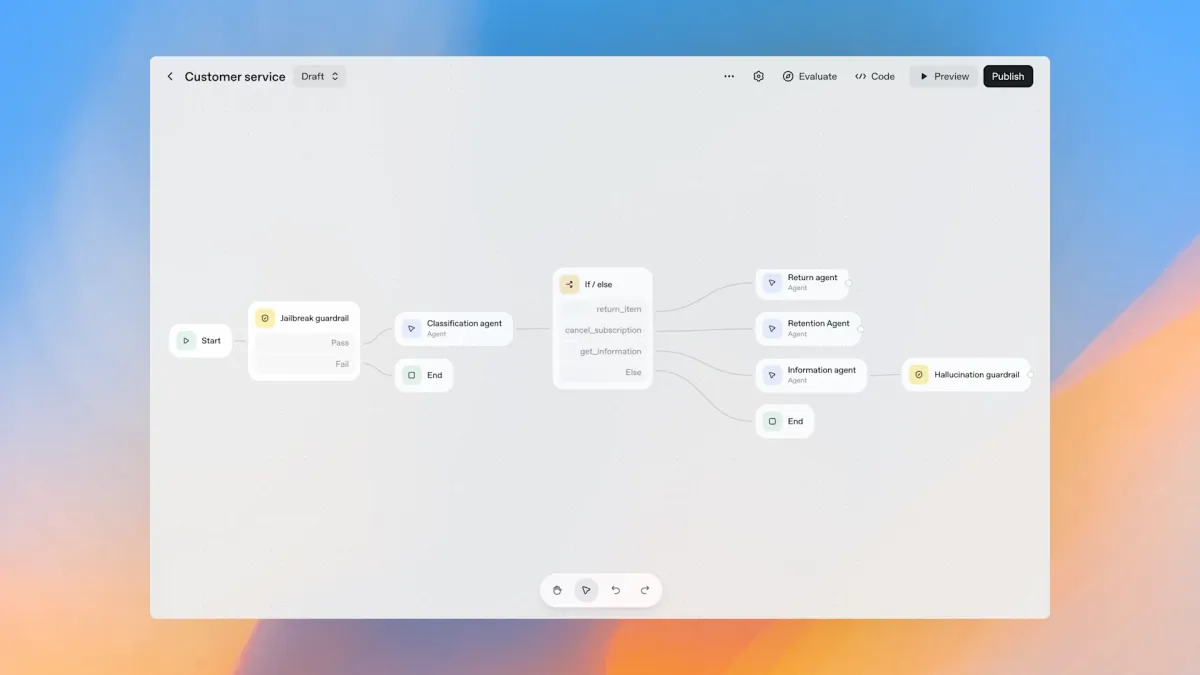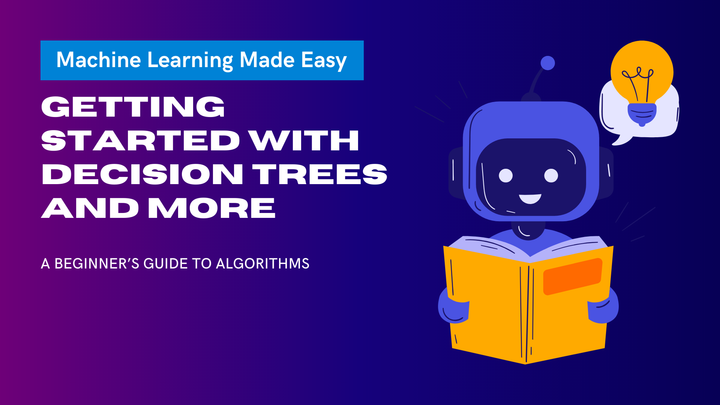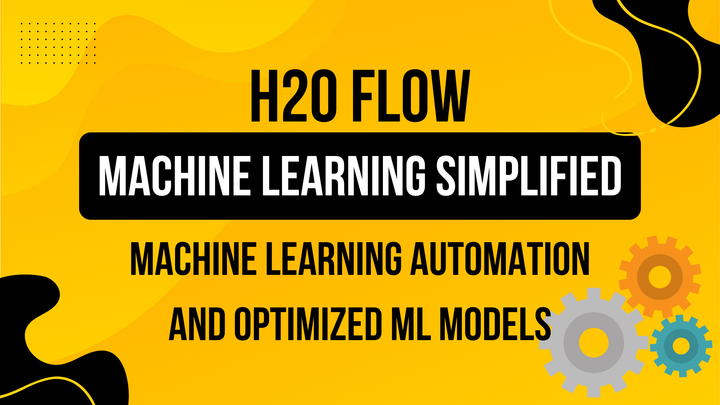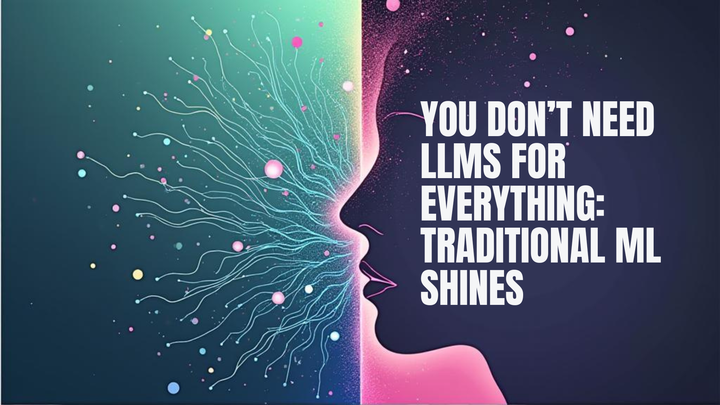Introducing OpenAI AgentKit: The AI Agent Builder Disrupting Automation Platforms like Zapier and n8n

Introduction: Meet AgentKit, OpenAI’s Bold Leap into Agentic Automation
Late 2025 is fast becoming a turning point for developers, enterprises, and even automation enthusiasts. Enter OpenAI AgentKit—a unified, developer-centric toolkit that propels AI-powered agents from vision to production-ready workflows at a pace and scale unmatched by legacy tools. Built to break away from the patchwork orchestration and brittle hand-coding of yesteryear, AgentKit promises to do for the “AI agent” what Excel did for spreadsheets or Zapier did for SaaS automation: democratize, accelerate, and transform.
If you’ve ever wrestled with workflow automation using Zapier, n8n, or similar no-code/low-code platforms, you know their immense value (and their boundaries). But as the world tilts from rule-based “if-this-then-that” scripts to dynamic, adaptive AI agents, the old guard faces a challenge. AgentKit doesn’t just automate steps; it empowers agents to reason, adapt, converse, and improve—outgrowing the task-based roots of its predecessors.
In this in-depth guide, we’ll decode AgentKit’s architecture, core capabilities, and real-world case studies. Then, we’ll stack it side-by-side with Zapier and n8n, highlighting disruption potential, pricing, limitations, and how these changes should reshape your automation strategy. SEO best practices will anchor every section to ensure this article doesn’t just inform but also ranks and earns backlinks.
What Is OpenAI AgentKit? A Unifying Canvas for Building, Deploying, and Optimizing AI Agents
At its core, OpenAI AgentKit is an all-in-one developer toolkit designed for building, deploying, and iteratively improving AI agents—autonomous software entities powered by LLMs (large language models) and custom logic. It addresses a pain point that’s dogged AI agent development: prior to AgentKit, teams juggled fragmented tools for workflow logic, frontend UIs, data integration, prompt tuning, safety guardrails, and performance evaluations. With AgentKit, these pieces come together into a clean, developer-focused stack.
Key components include:
- Agent Builder: Drag-and-drop, visual workflow designer for agentic logic and orchestration
- Connector Registry: Centralized management of data and SaaS connectors
- ChatKit: Plug-and-play, customizable chat UI for agentic experiences in products
- Guardrails: Modular, open-source safety layer to govern agent behavior and block risky outputs
- Evals: Built-in tools for evaluating, benchmarking, and optimizing agent performance—including support for reinforcement fine-tuning (RFT) and third-party LLMs
AgentKit extends and unifies OpenAI’s Responses API, Agents SDK, and new features launched at the 2025 OpenAI DevDay, distilling lessons learned from early adopters like Klarna, Ramp, and HubSpot.
Who is AgentKit for? Primarily for developers and AI engineering teams. Unlike pure no-code automation tools, AgentKit assumes technical skill, placing customizable power and flexibility (not “1-click simplicity”) at the forefront.
Core Components of AgentKit: A Close-Up
Agent Builder: Visual Workflow Design for AI-Powered Multistep Logic
Agent Builder is the heart of AgentKit. Think of it as a canvas where complex, multi-step agent workflows are mapped visually with drag-and-drop nodes, allowing you to:
- Chain together LLM model calls, tools, APIs, conditional logic, retries, memory/state management, and even handoffs between agents
- Start from scratch or leverage pre-built templates (e.g., Q&A bots, procurement assistants, onboarding flows)
- Add guardrails per node, configure preview runs live, and track full versioning—supporting rapid prototyping and safe deployment
Real-World Impact: Klarna built a support agent that now resolves two-thirds of all customer tickets. Ramp took a months-long procurement agent project from idea to production in just hours, cutting iteration cycles by 70%. LY Corporation orchestrated a multi-agent workflow in under two hours. These cases show dramatic acceleration—from “backlog nightmare” to live innovation.
Agent Builder isn’t just pretty UI—it’s functional, versioned, and API-backed. When a workflow is ready, you can export it for deployment in your product or integrate it with the AgentKit SDK in Python, Node.js, or Go.
Connector Registry and Guardrails: Secure, Govern, and Connect Data
Modern agents are only as useful as the data and toolkits they tap into. Enter Connector Registry, which offers a centralized admin panel for IT and security teams to manage data access and tool integration across ChatGPT, the API, and external sources:
- Connectors to Dropbox, Google Drive, SharePoint, Microsoft Teams, third-party Model Context Protocol (MCP) servers, and more
- Enterprise-friendly governance: admins manage domains, SSO, user roles, and audit trails in the Global Admin Console
- Breeds consistency and security—goodbye to shadow integrations
Layered on top is Guardrails—an open-source, modular safety framework to:
- Mask or flag sensitive personally identifiable information (PII)
- Block, quarantine, or alert on jailbreak attempts or malicious prompt inputs
- Enforce runtime rules (e.g., “never share account passwords”)
- Deploy flexibly as Python/JavaScript libraries or integrated directly in workflows
This focus on safety and governance is non-negotiable for regulated industries (finance, health, public sector)—and is a forensic audit waiting to happen in many traditional “Zapierified” setups.
ChatKit: Easy Embedding of Chat-Based Agentic UIs
In an age where “agentic UX” is the new SaaS competitive edge, ChatKit unlocks rapid deployment of conversational agent interfaces:
- Developers can embed a fully-featured, streaming, thread-aware chat component into their app or website in minutes
- Extensive theming and white-label branding support
- Handles “streaming” real-time responses, model “thinking” indicators, multi-user threading, proactive tools (like uploading files)
- Seamless handoff to underlying Agent Builder workflows—point ChatKit at your workflow, and it’s live
Case in Point: Canva built and integrated a developer support agent for its community docs in under an hour, saving two weeks of engineering time. HubSpot, LegalOn, and dozens of others use ChatKit to power support, onboarding, and research flows.
Evals: Datasets, Trace Grading, Reinforcement Learning, and Model-Agnostic Optimization
AgentKit closes the feedback loop with a robust suite of agent evaluation tools (Evals):
- Datasets: Quickly assemble test case corpora for agents, with automated and human-in-the-loop annotations
- Trace Grading: Run end-to-end tests across full agentic workflows and automatically analyze where (and why) failures arise
- Automated Prompt Optimization: Generate improved prompts based on live grader feedback, driving up reliability without laborious manual A/B tweaks
- Third-Party Model Support: Evaluate models from other vendors (Anthropic, HuggingFace, open-source LLMs) directly in OpenAI Evals
- Reinforcement Fine-Tuning (RFT): Now available for o4-mini and in beta for GPT-5, RFT lets teams teach models to call the right tools at the right moments; define custom “success” criteria via configurable graders
Major enterprise examples: Carlyle Group slashed development time for due diligence agents by 50% and improved accuracy by 30%. OpenAI’s customers report similar production gains in speed and quality.
Availability, Licensing, and Pricing
AgentKit’s pricing is refreshingly simple: all components (Agent Builder, ChatKit, Evals, Connector Registry) are bundled in OpenAI’s standard API pricing model. You pay for model usage (input/output tokens) and tool call volume—no added “seat” charges or workflow taxes.
- Agent Builder: Beta (open for most developers)
- ChatKit and Upgraded Evals: General availability
- Connector Registry: Beta, rollout for API, ChatGPT Enterprise, and Edu customers with the Global Admin Console
- Workflows API and agent deployment inside ChatGPT: Coming soon
This model is powerful but variable. Usage can spike with heavy agent operation, so budgeting requires attention (unlike the flat subscription plans of Zapier or predictable hosting of self-hosted n8n). However, for many enterprises, this brings freedom—scale with your business needs, not arbitrary SaaS pricing tiers.
What Can You Actually Build with AgentKit? Real-World Use Cases and Case Studies
1. Customer Support Automation: Klarna’s 2/3 Ticket Resolution
Case study: Klarna adopted OpenAI agents for their customer support operations. In just one month, the AI-powered agent handled two-thirds of all customer interactions (2.3 million conversations), essentially replacing the work of 700 full-time employees for basic ticket resolution. Customers saw average resolution times plummet from 11 minutes to just 2, all while freeing human agents for edge cases.
2. Enterprise Procurement, Sales, and Internal Tools: Ramp and Clay
Ramp, a fintech startup, used AgentKit to digitize its procurement workflow. What took months of orchestration with hand-coded integrations was built visually and shipped in two sprints. Meanwhile, Clay turbocharged its sales pipeline, reporting a 10x boost in productivity by deploying agentic sales flows.
3. Knowledge Retrieval, Research, and Onboarding: HubSpot, Canva, Evernote
Organizations like HubSpot and Canva embedded ChatKit-driven agentic assistants to power developer Docs, customer onboarding, and even internal knowledge search. Their consistent feedback: what used to mean weeks of UI, backend, and workflow glue code now takes just hours to ship and iterate on.
4. Multi-Agent Workflows for Regulated and Collaborative Contexts: LY Corporation
Instead of siloed, script-driven automations, LY Corp built a work assistant agent—complete with custom guardrails and deep subject-matter expert collaboration—in under two hours. Agent Builder’s single interface brought engineering, legal, and product teams into shared visibility, slashing cross-department misfires.
5. Model Testing, LLM Benchmarking, and Continuous Agent Improvement
With tools like Trace Grading and Automated Prompt Optimization, teams can launch, monitor, and optimize mission-critical agents (e.g., due diligence frameworks, document extraction pipelines, or expert Q&A bots) at scale. Agents improve with every real-world interaction—something static “zap” workflows can’t match.
AgentKit, Zapier, and n8n Head-to-Head: Features, Flexibility, and Future
To understand AgentKit’s disruptive ambitions, let’s map AgentKit, Zapier, and n8n across the criteria that matter most to automation professionals and business leaders.
| Feature / Metric | OpenAI AgentKit | Zapier | n8n |
|---|---|---|---|
| Core Audience | Developers, enterprise IT, AI teams | Business users, marketers, product ops, SMBs | Developers, power users; flexible tech teams |
| Workflow Design | Drag-and-drop multi-agent canvas; node-based, versioned, real-time preview | Linear “trigger-action” flows, step-by-step, limited branching | Visual builder + JS for elaborate logic, rich branching |
| AI/LLM Integration | Native (GPT-5, o4-mini, 3rd-party models, RFT, prompt tuning) | Minimal: OpenAI/AI steps, but no deep agentic chaining | Advanced: Native OpenAI, custom LLM chaining |
| Connectors/Integrations | Connector Registry: growing (SharePoint, Google, Teams, SaaS, MCP support) | Largest app library—8,000+ SaaS APIs (CRM, Mail, Payroll) | 500+ nodes + extensible custom API modules |
| No-Code/Low-Code | Low-code building for developers; not true no-code | True no-code, beginner-friendly, guided launcher | Intermediate/Advanced: visual + code mix |
| Open Source? | No, proprietary (standard API) | No | Yes (Fair-code); free self-hosted option |
| Collaboration/Security | Centralized admin control, SSO, versioning, guardrails, audit logs | Limited team sharing (better at higher pricing) | Role-based collaboration, compliance (self-hosted) |
| Evaluation/Testing | Evals: datasets, trace grading, prompt optimization, support for 3rd-party LLMs | None—testing done manually or by workflow logs | Testing possible; manual debugging |
| Pricing | API model-based (variable, usage-driven) | Subscription + task count, “Zaps”/mo (starts $19.99/mo, team $69+) | Free self-hosted, or $20–$28/user/mo on cloud |
| Strengths | AI-native, collaborative, safe, massive agent flexibility | Easiest onboarding, huge app support, reliable S+SaaS | Deep customization, self-hosting, low/no cost |
| Limitations | Technical skill required, usage cost variable, nascent connector coverage | Weak for advanced AI, limited custom branching, costlier at scale | Steep learning curve, smaller app ecosystem |
| Deployment | Cloud, in-app (ChatKit), API | Cloud only (hosted), no self-hosting | Cloud or self-hosted; Docker/Kubernetes support |
Table: OpenAI AgentKit vs. Zapier vs. n8n, October 2025 comparisons, synthesized from current documentation and expert analysis.
Key Points of Comparison and Analysis
1. AI Agent Workflows: Depth, Flexibility, and Reasoning
- AgentKit: Unmatched in chaining LLM calls, dynamic tool invocation, contextual “memory”, and in-task reasoning; supports complex, adaptive, multi-agent workflows easily
- Zapier: AI steps exist (e.g., summarization using OpenAI), but deep reasoning is not native; logic is limited to triggers, actions, maybe a filter or formatter
- n8n: Best “classic” alternative for developers—custom scripts, conditional logic, and direct branching, with native OpenAI nodes
2. Connector Coverage and Integrations
- Zapier rules for raw breadth: 8,000+ SaaS apps (from Salesforce to legacy CRM to marketing, finance, HR, etc.)
- AgentKit is rapidly growing but still focused on mainstream productivity tools and enterprise data sources; third-party Model Context Protocol aims to open up more
- n8n: 500+ nodes, but extensible through code; sweet spot for custom in-house integration
3. UX, Onboarding, and Collaboration
- Zapier’s drag-and-drop, step-by-step flow is unbeatable for non-technical users; blast off in minutes
- AgentKit: Visual canvas is powerful (similar to Langflow or Flowise for LLM workflows), but expects developer know-how; democratizes cross-functional team visibility
- n8n: Not targeted at beginner users; intermediate tech skill needed
4. Security, Compliance, and Governance
- AgentKit’s centralized admin tools, SSO, guardrails, and audit trail set a new baseline for enterprise AI risk management
- n8n (self-hosted) can be locked down tightly for sensitive use, but requires ongoing maintenance
- Zapier is SaaS-first—good for convenience, less flexible for on-prem compliance
5. Pricing Approach
- Zapier: Subscription + tasks; famously can get expensive at scale as every filtered step (even a branching logic) counts as a separate “task”
- AgentKit: Purely usage-based—if your agent is cost-efficient, and you watch your prompts/tool calls, costs can be minimized; big spikes mean bigger bills
- n8n: Free if self-hosted, per-user if on their cloud; ideal for cost control and data residency
Disruption Potential: Will AgentKit Replace Zapier and n8n?
AgentKit doesn’t try to undercut Zapier or n8n on their SaaS app directory, drag-and-drop simplicity, or beginner onboarding. Instead, it reframes the problem: as businesses move toward “agentic” workflows (context-driven, flexible, learning, and reasoning), rule-based tools start to look rigid and brittle.
- Zapier and n8n = “Script what happens when X triggers Y.” Great for running the digital assembly line.
- AgentKit = “Summon a reasoning agent that can plan, dynamically adapt, remember context, call multiple tools, and evolve over time.” The assembly line thinks on your behalf.
As AI agents become core to support, onboarding, research, and automation across industries, the blogosphere asks the obvious: Will AgentKit disrupt Zapier and n8n? Here’s the cut:
- For AI-centric teams, AgentKit is a no-brainer: the only tool that delivers dynamic multi-step LLM agent workflows, integrated safety, and robust enterprise controls.
- For classic SaaS integration, marketing, and SMB automation, Zapier likely remains king for now—due to its app coverage and dead-simple onboarding.
- Open-source fans and privacy-obsessed enterprises will still prefer n8n’s self-hosted model, though the open Model Context Protocol in AgentKit could close the gap.
- As AI agents become “the new APIs” for the enterprise, expect legacy automation leaders to rush deeper into LLM and agent orchestration (either building or acquiring). AgentKit’s incentive: own the developer and enterprise mindshare for the AI-native era.
Summary verdict: In industries where dynamic reasoning and flexible agentic action is needed (“AI with tools, not just triggers”), AgentKit will start biting big chunks out of the classic automation platform pie.
Limitations and Challenges: Where AgentKit Isn’t a Silver Bullet
Despite the fanfare, AgentKit isn’t a drop-in, all-you-can-use business solution for every workflow automation challenge. Users and businesses should be aware of these challenges:
- Target Audience: AgentKit is built for developers. If you lack in-house technical expertise, setup and maintenance will be daunting compared to pure no-code solutions.
- Not plug-and-play: Deep integration with tickets, CRM, or HR requires API skills, understanding LLM tool workflows, and prompt engineering. Frontend coding for custom ChatKit, agent deployment, or Evals is still required.
- Connector Coverage: While expanding, AgentKit’s out-of-the-box “integration count” lags far behind Zapier’s vast SaaS roster. For niche, long-tail apps, you may wait for coverage or build it yourself.
- Budgeting unpredictability: Pricing tied to API/model use means spiky loads can mean surprise costs, unlike fixed-plan automation platforms.
- Complex workflow sprawl: Visual workflow builders can devolve into tangled, hard-to-debug “graphs” for large agent systems without discipline, documentation, and graph management.
- Guardrails are robust, but not infallible: Innovations like PII-masking and jailbreak detection help—yet no AI agent is perfectly “safe” or “aligned” at scale. Human oversight remains mandatory.
- Business-friendly testing: Tools like Evals are developer-centric, and not as immediately approachable for business operations or support leaders. There’s a gap for “non-dev” validation tools.
- No on-prem/self-hosted deployment (yet): Unlike n8n, there’s currently no agent “bring your own infrastructure” model for data residency or air-gapped compliance use cases—though this could change.
In short: AgentKit isn’t a direct plug-and-play upgrade over Zapier/n8n for everyone. Consider it a developer’s super-suite for building the future of AI-powered agentic automation.
AgentKit and the Future of SEO-Driven Automation Content
Given the growing intersection between agentic workflows and search engine optimization (SEO) strategies, bloggers and product teams deploying AI automation need to think “agentic SEO.” What does that mean?
- Agentic SEO leverages AI agents to automate keyword research, content audits, outreach, and link building; enables predictive optimization and algorithm adaptation to boost rankings faster than manual workflows.
- Always-on: Agents analyze real-time search behavior and competitor movements, update content recommendations, and pivot strategies as algorithm changes hit.
- Content creation at scale: LLM agents (built via AgentKit-like tools) generate, critique, and optimize copy grounded in keyword clusters and E-E-A-T (Experience, Expertise, Authoritativeness, Trustworthiness) best practices.
SEO for AgentKit blog articles: Use focus keywords (“OpenAI AgentKit,” “agentic automation,” “automation platform alternatives”) throughout headers and body, ensure internal and external linking, and target link acquisition by in-depth, up-to-date reporting.
Agentic SEO Tools to Know:
- Internal AI agents for keyword clustering and content brief generation (SERP analysis, gap discovery)
- Audit and performance agents for identifying on-page/off-page optimization opportunities
- Real-time monitoring agents for ranking, technical site health, and backlink tracking
Early-adopter companies blending AgentKit’s programmatic agent workflow design with agentic SEO reap higher quality, up-to-date, and more widely distributed content.
SEO Optimization Strategies for Writing About AgentKit
To ensure content on AgentKit performs as well in SERPs as it does for human readers, follow “Three Kings of SEO”:
- Keywords: Use a strategic mix of high-intent focus keywords (e.g., “OpenAI AgentKit”, “AI agent builder”, “AgentKit vs Zapier”, “agentic automation”), synonyms, and long-tail questions (e.g., “How does OpenAI AgentKit work in 2025?”). Place these in H1–H3 headers, intro paragraph, descriptive meta tags, and image alts.
- Content Quality: Provide uniquely fresh insights—e.g., live customer case studies, up-to-date feature lists (with October 2025 release notes), technical comparisons, and implementation tips—for a double win: more backlink opportunities and longer reader engagements.
- Backlinks: Aim for citations from forums like Hacker News, Reddit r/MachineLearning, AI product reviews, and integrations with popular tool directories and newsletters. Author guest posts comparing AgentKit and “legacy” automation, or demo case study walkthroughs, to earn high-quality domain links.
Action tip: Launch a “How to Migrate from Zapier to AgentKit” guide. Offer rich, step-by-step content with schema markup and code samples. This earns both organic rankings and referral links in the automation and startup ecosystem.
Conclusion: Is AgentKit the Future of Autonomous Automation?
OpenAI AgentKit isn’t just the next tool for workflow builders or the latest “AI add-on.” It’s a watershed moment: the beginning of production-grade, AI-native agentic automation where intelligent agents not only trigger actions, but reason, adapt, converse, and continuously improve.
For developers and AI teams: AgentKit is ready. Its drag-and-drop canvas, safety toolkit, and live chat UX fuse state-of-the-art AI with uncompromising production needs. For businesses: The bar is higher than ever—customers, employees, and partners now expect workflows that “think for themselves,” adapt instantly, and feel human. For competitors like Zapier and n8n: The race is on. The next era of automation is agentic, not just scripted.
But remember—AgentKit is not a panacea. It shines brightest for those willing to engage deeply: developers who embrace data, prompt design, and safety protocols, and organizations prepared for the learning curve (and variable pricing) of high-scale AI operation. For plug-and-play, daily business automations, legacy platforms still win on simplicity and breadth.
One thing is clear: this isn’t just a new tool. It’s a power shift—from static workflows to adaptable AI teams, from scattered scripts to unified agent experiences. With AgentKit, every business can automate like a tech unicorn, and every developer can build the next wave of intelligent automation, today.
FAQ: Key Questions about AgentKit
Who is AgentKit for?
- Primarily developers and organizations with in-house tech skills. Not plug-and-play for business teams.
Can AgentKit replace Zapier/n8n for everything?
- Not immediately. For advanced, AI-driven, agentic workflows: yes. For huge SaaS app coverage and simple plug-and-play automations: not yet.
What’s the pricing like?
- Usage-based, no extra “per workflow” fees. Costs scale with model/tool calls—not flat monthly.
How do I get started?
- Sign up for OpenAI API. Access Agent Builder (beta available), try ChatKit and Evals (general release), and explore connector options via the Global Admin Console.
Does AgentKit support non-OpenAI models?
- Yes, via Evals and custom integrations—track performance and optimize using your vendor of choice.
Is AgentKit open source?
- No. Unlike n8n, AgentKit is proprietary, living in the OpenAI AI/developer ecosystem.
Ready to build the future of automation? Try AgentKit, experiment, and share your success story—because in the AI era, agents don’t just automate. They think, adapt, and collaborate.
Keywords: OpenAI AgentKit, AI agent builder, visual workflow automation, AgentKit vs Zapier, AgentKit vs n8n, agentic automation, chatkit, AI-powered workflows, agentic SEO, prompt optimization
Spread the word. Link to this page. Let’s build the next wave of automation together.



Comments ()